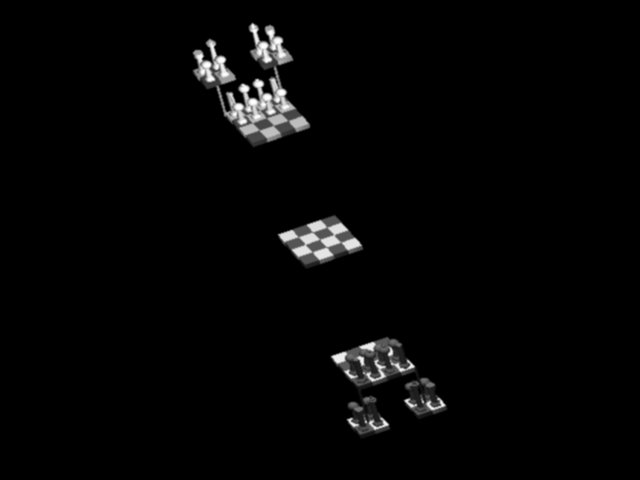3D Chess Game from Star Trek

This game is based on rules by Andrew Bartmess. You can find his official rules here
This is the basic idea:
Pieces move the same way as in regular chess
The little (2*2) boards are called attack boards
They also can move. They can move to another corner on the same level where they are
if they have nothing on them but a single pawn. They can also be moved to the corner above
or below the corner that they're on if there's nothing on them at all.
They can only be moved by their controller (indicated by the color of the column connecting
the attack board to the corner upon which it's sitting).
An attack board can be captured if there's nothing on it and a piece of the other color stops on it.
In order to move between the main boards (the 4*4 boards), you must first step on an attack board.
The attack boards overlap the corner upon which they're sitting (rotate the board to a top view to better understand this),
and you can't move straight up or down (you must change squares - overlapped squares are considered to be the same square)
You can select pieces by left-clicking on them and clicking where you want them to go.
Attack boards (if they can move) are selected in much the same way
If you can't move a piece, then you can't select it.
If you right click, you are presented with a menu which will let you begin a new game,
move the board around, switch to or from fullscreen mode, switch either player from human to
computer of vice-versa, toggle computer statistics, or quit.
If you want to move the board around (pan, rotate, or zoom), select a command, and then click and drag
For a rotation, after you select the rotate command, if you left click, you can rotate about the x or y axes,
and if you right click, you can rotate about the x and z axes.
The computer statistics mode tells you what the computer player is doing - how many times it
called the evaluation function, how many times it pruned the search tree, and the maximum depth that the search tree reached
on the previous turn.
Here is the Windows 95/NT excecutable in ZIP format
In order to run the game, you need OpenGL libraries and the Glut library.
I compiled it to use the SGI OpenGL libraries, because I think that the're faster. (MMX enhanced, etc.)
The program should work with the microsoft ones anyway.
Unless SGI has removed them again, they're here
The glut library and info about it can be found here
Sorry I'm not distributing the source, but it's real messy and I want to hoard it, for now.
There will probably be linux, mac and sgi versions soon.
Any questions? mail me
By the way, it really won't run very fast (jerky graphics) on anything less than a pentium 166 (my best guess) with lots of ram
I know that I did try it on a Pentium Pro 200 with 32 megs of ram running NT, and that was kinda slow.
That's not really my fault, it's the OpenGL libraries.
It won't work very well right now with the 3dfx OpenGL, because of lack of hardware cursor support and support for the windowing stuff.
Here's info about the graphics
Here's info about the AI
